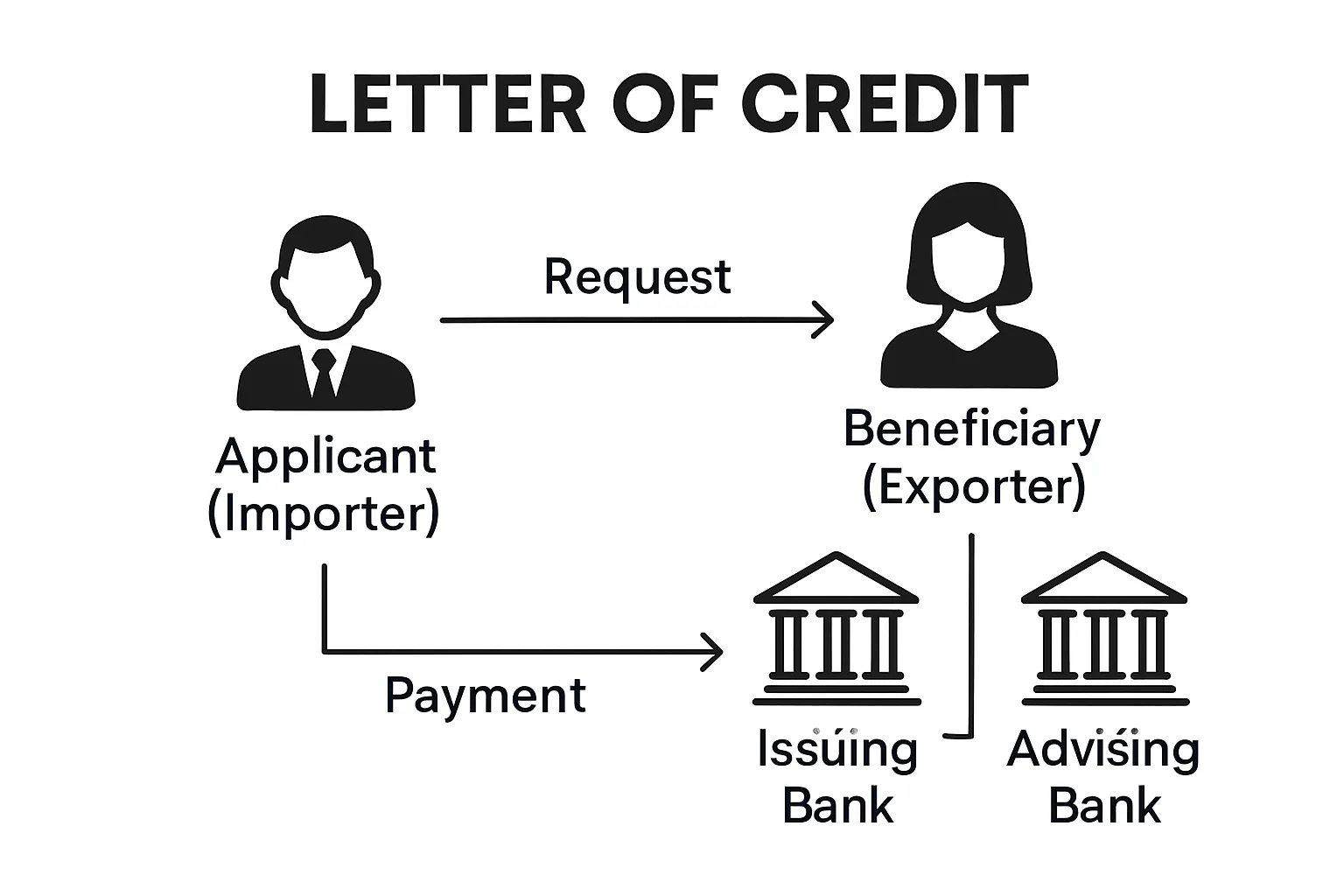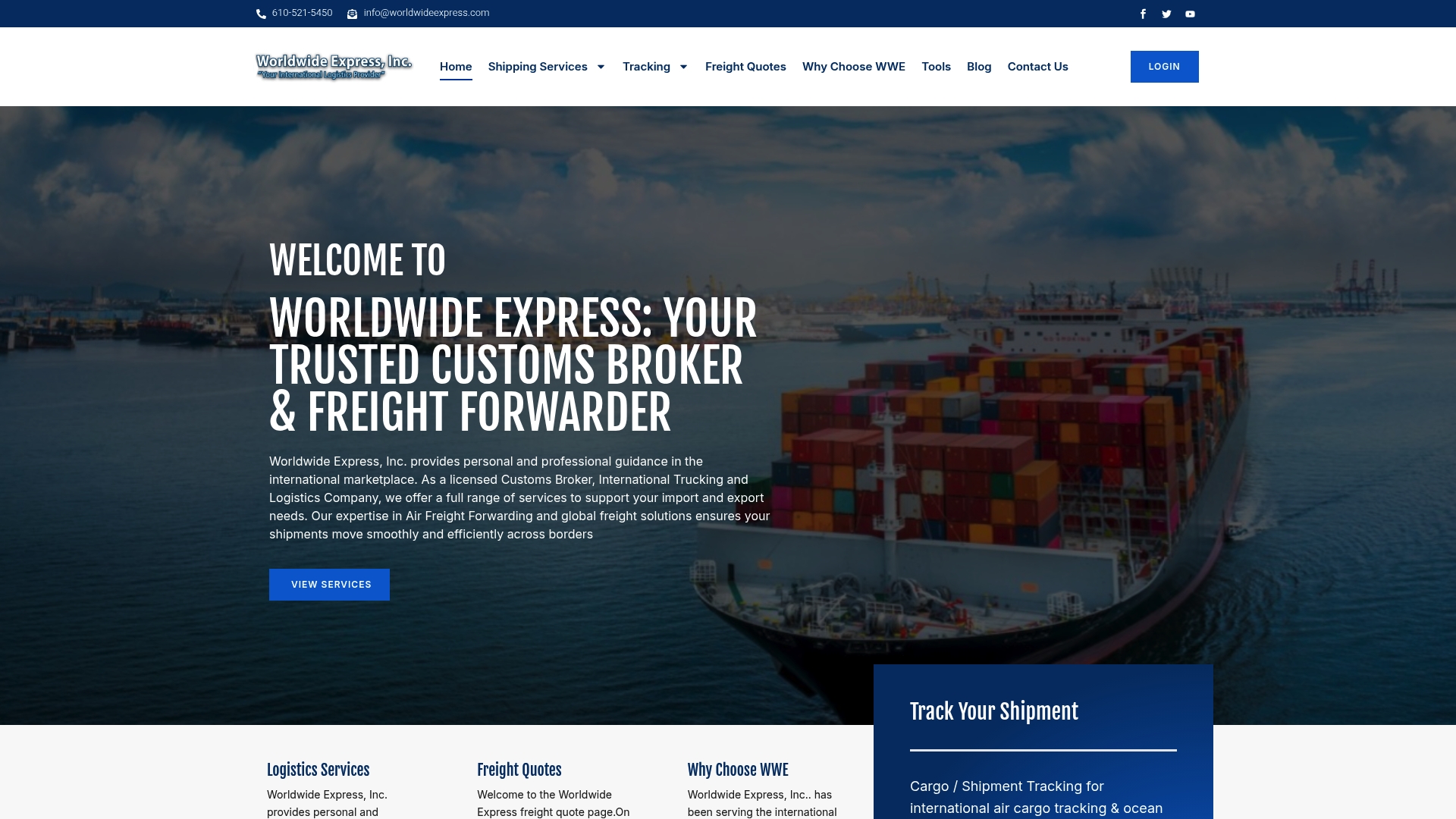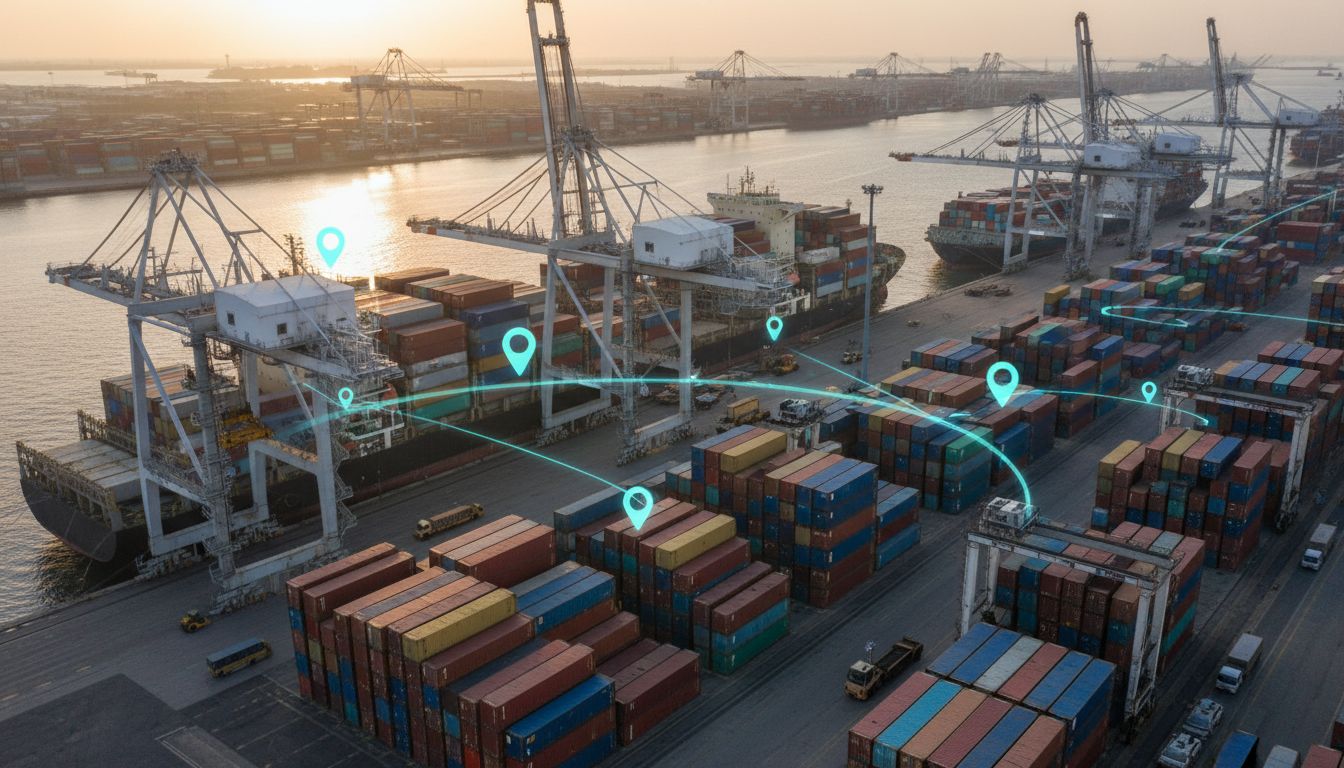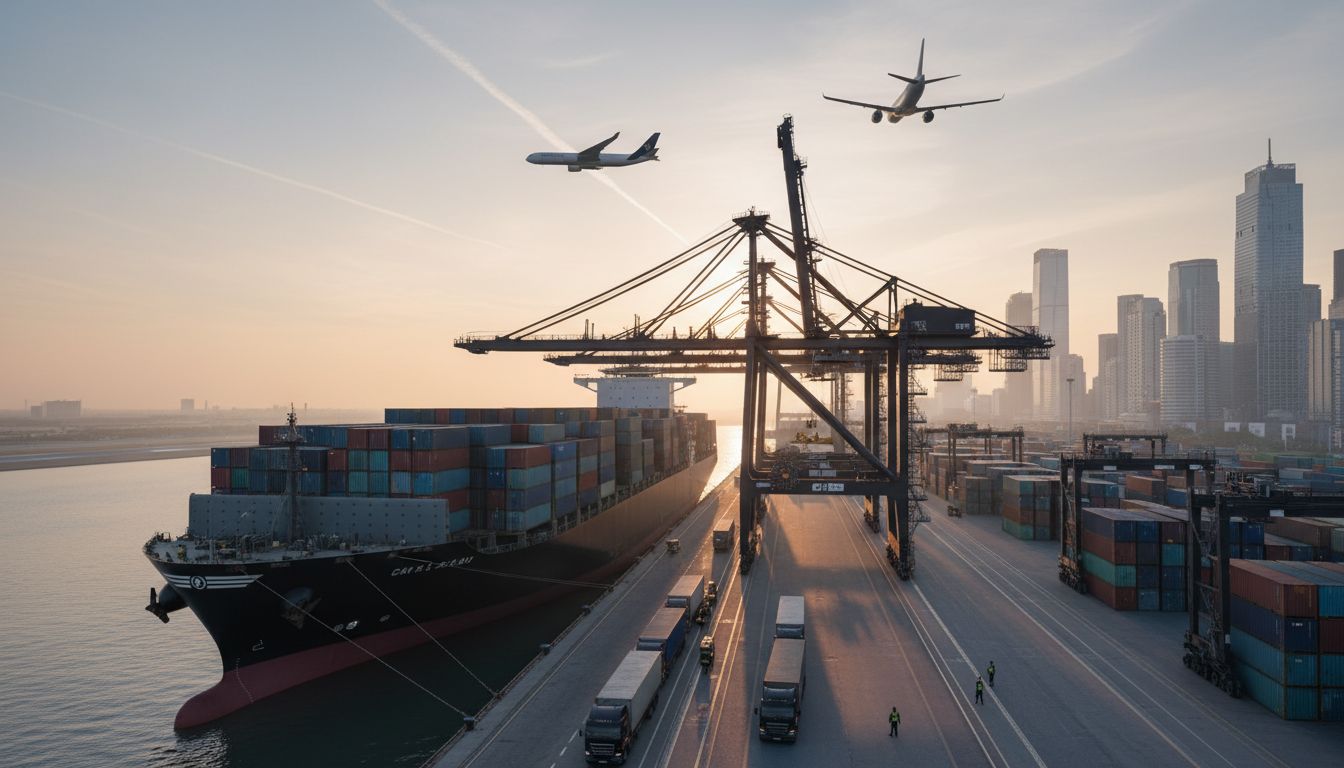Every year, billions of dollars move across borders as companies ship goods worldwide using trusted financial tools. Most people think international shipping is just about containers or freight charges. But the real unsung hero is the letter of credit. A letter of credit guarantees payment to exporters, effectively removing one of the biggest risks in cross-border trade. This single document is what transforms uncertainty into opportunity for global business.
Table of Contents
- What Is A Letter Of Credit In Shipping?
- The Importance Of Letters Of Credit In Global Trade
- How Letter Of Credit Shipping Works
- Key Components Of A Letter Of Credit
- Common Challenges In Letter Of Credit Transactions
Quick Summary
| Takeaway | Explanation |
|---|---|
| Letters of Credit Enhance Trade Security | They guarantee payment when specific conditions are met, protecting both buyers and sellers. |
| Precise Documentation is Critical | All shipping documents must exactly match the letter of credit terms to avoid payment rejection. |
| Risks in Transaction Must be Managed | Financial risks like currency fluctuations and timing delays can significantly affect trade operations. |
| Clear Roles of Participants are Essential | Understanding the roles of the applicant, beneficiary, and banks is crucial for successful transactions. |
| Address Compliance Challenges Proactively | Businesses should ensure attention to detail in documentation to minimize potential disruptions. |
What is a Letter of Credit in Shipping?
A letter of credit (LC) represents a critical financial instrument that facilitates secure international trade transactions between importers and exporters. Trade documentation experts define it as a written commitment from a bank guaranteeing payment to an exporter, provided all specified terms and conditions are precisely met.
Financial Security in Global Commerce
Letters of credit serve as a sophisticated risk management tool that protects both buyers and sellers during complex international shipping transactions. By establishing a formal, bank-backed payment mechanism, LCs eliminate uncertainties that typically plague cross-border trade. The primary function is to transfer payment risk from the exporter to the issuing bank, which becomes legally responsible for honoring the payment upon successful document verification.
Key Components of Letters of Credit
Understanding the core components of a letter of credit is essential for businesses engaged in international shipping. Key elements include:
- Applicant: The importer who requests the letter of credit
- Beneficiary: The exporter who will receive payment
- Issuing Bank: The financial institution that issues the LC
- Advising Bank: The bank that validates and forwards the LC to the beneficiary
The mechanism works by requiring precise documentation that proves goods have been shipped according to predetermined specifications. Learn more about international shipping documentation to complement your understanding of letters of credit.
When an exporter ships goods, they must submit specific documents like bills of lading, commercial invoices, and certificates of origin. These documents undergo rigorous bank scrutiny to ensure complete compliance with the letter of credit’s terms. If all requirements are met, payment is guaranteed, providing financial security and trust in international trade transactions.
The Importance of Letters of Credit in Global Trade
Letters of credit play a pivotal role in mitigating risks and establishing trust in international trade transactions. Global trade experts recognize these financial instruments as critical mechanisms that enable businesses to conduct cross-border commerce with increased confidence and reduced financial uncertainty.
Risk Mitigation and Financial Protection
In the complex landscape of international trade, letters of credit serve as robust financial safeguards. They provide comprehensive protection for both importers and exporters by creating a structured payment mechanism that minimizes potential conflicts and economic risks.
Fundamental risk reduction occurs through several critical functions:
- Guaranteeing payment upon successful fulfillment of predetermined shipping conditions
- Transferring payment risk from the exporter to the issuing bank
- Establishing clear, legally binding documentation requirements
Economic Enablement in International Commerce
Letters of credit are not merely financial tools but economic enablers that facilitate global trade expansion. By providing a standardized, secure framework for transactions, they help businesses overcome traditional barriers such as geographical distance, different legal systems, and mutual distrust. Explore the intricacies of international transportation to understand how financial instruments like LCs support seamless global commerce.
The economic significance of letters of credit extends beyond individual transactions. They contribute to broader international economic integration by reducing transaction costs, minimizing financial risks, and creating predictable payment structures that encourage cross-border business relationships. For small and medium enterprises especially, LCs represent a critical pathway to participating in global markets that might otherwise be inaccessible due to financial uncertainties.
How Letter of Credit Shipping Works
The letter of credit shipping process involves a complex, carefully orchestrated series of interactions between multiple parties to ensure secure international trade transactions. International trade documentation experts describe this mechanism as a systematic approach to managing financial risks in cross-border commerce.
Initiation and Document Preparation
The letter of credit shipping process begins with the importer requesting their bank to issue a letter of credit on their behalf. Critical initial steps include:
- Negotiating specific transaction terms with the exporter
- Determining precise shipment and documentation requirements
- Specifying exact conditions for payment release
Once the LC is issued, the exporter must meticulously prepare documentation that matches every stipulation outlined in the letter of credit. Precise documentation is crucial, as banks will examine documents with extraordinary scrutiny.
Shipping and Verification Process
After shipping goods, the exporter compiles a comprehensive set of documents including bills of lading, commercial invoices, certificates of origin, and other required paperwork. Learn more about essential freight documentation to understand the intricate requirements of international shipping.
The presenting bank carefully reviews these documents against the letter of credit’s specifications. Any discrepancy, no matter how minor, can result in payment rejection. If all documents meet the exact requirements, the bank will process payment to the exporter, effectively transferring funds from the importer’s account and completing the transaction.
Key Components of a Letter of Credit
Trade documentation specialists recognize that a letter of credit involves multiple interconnected components that ensure transparent and secure international transactions. Understanding these elements is crucial for businesses navigating complex global trade environments.
To clarify the roles and responsibilities of each party involved in a letter of credit transaction, the following table compares the primary participants discussed in the article.
| Participant | Role in LC Transaction | Key Responsibility |
|---|---|---|
| Applicant | Importer who requests the letter of credit | Initiates LC to guarantee payment |
| Beneficiary | Exporter who will receive payment | Ships goods and presents documentation |
| Issuing Bank | Bank that issues and guarantees the letter of credit | Ensures payment on valid document check |
| Advising Bank | Bank that notifies and forwards the LC to the beneficiary | Validates/authenticates LC for exporter |
| Confirming Bank* | Optional bank that may add further payment guarantee | Provides additional assurance if needed |
*Confirming Bank participation is optional and offers an extra layer of security.
Primary Participants in Letter of Credit Transaction
Every letter of credit involves several key parties, each with distinct roles and responsibilities.
 Primary participants include:
Primary participants include:
- Applicant: The importer who initiates and requests the letter of credit
- Beneficiary: The exporter who will receive payment
- Issuing Bank: The financial institution that creates and guarantees the letter of credit
- Advising Bank: The bank that validates and communicates the LC to the beneficiary
- Confirming Bank: Optional participant that adds an additional layer of payment guarantee
Essential Documentation Requirements
Documentation forms the backbone of letter of credit transactions. Critical documents typically encompass:
- Commercial invoice detailing transaction specifics
- Bill of lading or transport document
- Certificate of origin
- Packing list
- Insurance certificates
Discover more about international shipping documentation to complement your understanding of letter of credit components.
Each document must precisely match the specifications outlined in the original letter of credit. Banks conduct meticulous reviews, and even minor discrepancies can result in payment rejection.
 The exact alignment of documents with LC terms represents a fundamental requirement for successful international trade transactions.
The exact alignment of documents with LC terms represents a fundamental requirement for successful international trade transactions.
Common Challenges in Letter of Credit Transactions
International trade compliance experts acknowledge that letter of credit transactions involve complex processes where even minor errors can significantly disrupt trade operations. Understanding these potential challenges is crucial for businesses engaged in global commerce.
Documentation Precision and Compliance
The most prevalent challenge in letter of credit transactions revolves around documentary compliance. Banks evaluate submitted documents with extraordinary precision, and any deviation from the original letter of credit specifications can result in immediate rejection. Critical areas of potential discrepancy include:
- Slight variations in product descriptions
- Incorrect shipment dates
- Minor formatting differences in required documents
- Inconsistent currency representations
- Incomplete or missing mandatory documentation
Financial and Timing Risks
Beyond documentation challenges, letter of credit transactions present inherent financial and timing complexities. Potential financial risks encompass:
- Unexpected currency exchange rate fluctuations
- Extended processing times for document verification
- Additional bank fees for document amendments
- Potential payment delays due to strict compliance requirements
Explore strategies for navigating international shipping complexities to mitigate potential transaction risks.
Successful navigation of these challenges requires meticulous attention to detail, comprehensive understanding of international trade regulations, and proactive communication between all transaction participants. Businesses must invest time in understanding precise LC requirements and maintaining open communication channels to minimize potential disruptions.
Turn Documentary Compliance Into Smooth Cross-Border Shipping
Struggling with the complexity of letter of credit shipping and the risks of missed documentation? You are not alone. Many businesses experience stressful delays or rejected payments due to tiny mistakes in paperwork and compliance. The pain of navigating strict letter of credit requirements can slow your growth and put deals at risk. Understanding every detail is critical but can be overwhelming.

Worldwide Express, Inc. removes uncertainty from your international shipping process. Our experts provide hands-on customs brokerage, freight forwarding, and document management designed for letter of credit transactions. We ensure every document meets the highest standards, making your shipments secure and your payments reliable. Ready to ease your compliance burden and protect your business? Discover the difference with a trusted partner. Start with our expertise today at Worldwide Express, Inc. or explore our Uncategorized solutions for more ways we can support your global trade success.
Frequently Asked Questions
What is a Letter of Credit in international trade?
A Letter of Credit (LC) is a financial instrument issued by a bank, guaranteeing payment to an exporter as long as the specified terms and conditions are met. It serves as a secure payment mechanism in cross-border trade.
How does a Letter of Credit mitigate risks in shipping transactions?
A Letter of Credit minimizes risks by transferring payment responsibility from the exporter to the issuing bank, ensuring that payment is guaranteed once all documentation is correctly submitted and verified.
What documents are required when using a Letter of Credit?
Key documents typically required include a commercial invoice, bill of lading, certificate of origin, packing list, and insurance certificates. All documents must comply precisely with the terms outlined in the Letter of Credit.
What common challenges arise when dealing with Letters of Credit?
Common challenges include strict documentary compliance, where even minor discrepancies can lead to payment rejection, as well as financial risks related to currency fluctuations and potential delays in document processing.
Recommended
- Understanding Bill of Lading Types in Trade Transactions – Worldwide Express, Inc.
- 8 Packing List Essentials for International Trade Success – Worldwide Express, Inc.
- Understanding What is Through Bill of Lading – Worldwide Express, Inc.
- 7 Key Tips for Mastering Post Office International Shipping – Worldwide Express, Inc.






